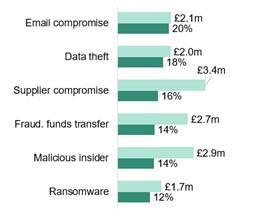The corruption charges against FIFA officials raise disturbing issues – for the insured, at least – about whether bad behaviour renders D&O null and void

The wholesale indictments of current and former officials of FIFA, not to mention the investigations into some of the top people at its athletics counterpart, the IAAF, raise disturbing issues about D&O cover in cases of bribery and corruption. Disturbing for the insured, that is.
The burning issue is when exactly – or if – D&O is invalidated by a director or officer’s behaviour. For instance, while most policies cite acts of fraud and other criminal offences as a sufficient trigger to cancel the cover and leave the insured high and dry, the misdemeanours generally have to be proved first.
And then there’s the “prior knowledge” exclusion. If the insured knew of corrupt practices that occurred before a D&O policy was written but did not tell the insurer, that may also give the carrier a let-out.
Nor does retirement close the book. Under some legal systems, as in Germany for instance, directors remain liable for prosecution for up to 10 years after they have retired.
And finally, the fraught matter of “allocation”. If an organisation is sued, generally by a government agency, for bribery and corruption, how far down the line does the D&O cover go?
Perhaps, as law firms point out, executives or other officers may be left exposed for having, say, acceded to a director’s request to pay kickbacks through secret bank accounts.
In the meantime – as more and more countries, prompted by US investigators, adopt tougher anti-corruption regulations – directors’ exposure to these kinds of regulations is growing just about on a daily basis. As Edward Smerdon, a D&O specialist in London-based law firm Sedgwick Detert Moran and Arnold, pointed out in an ACE report on the subject released in December, jurisdictions everywhere are becoming less and less forgiving of ethical breaches.
“Europe, China and India, for example, are tightening their corruption laws. That’s a theme we’re seeing,” he explains. “Key US laws such as the Foreign Corrupt Practices Act (FCPA) are being followed by other countries because they don’t want US authorities poking their noses into their jurisdictions.”
Rampant, systemic, deep-rooted
But to get back to FIFA. The D&O issue within the football body is complicated because a hard core within the organisation has spilled the beans.
In mid-2015, US authorities indicted 14 current and former officials and associates on charges of “rampant, systemic and deep-rooted” corruption, as law firm Clyde & Co recalls in a report on the investigation in January.
And early this year, a further 16 defendants were charged with racketeering, wire fraud and money laundering in relation to an “unconscionable” scheme of corruption that had been running for 24 years. In most cases of D&O cover, the duration of such a fraud would be sufficient to crack the policy wide open.
Now, while these allegations remain to be proved, some defendants have been singing. According to the US Department of Justice, eight defendants have pleaded guilty under seal and agreed to repay $40m pocketed in kickbacks for media deals. As we speak, insurers are working out whether these admissions can be taken as proof of the liability of more senior officers such as former FIFA president Sepp Blatter.
In all this, Blatter’s position is highly fluid. Banned in January from involvement in football for eight years because of “unethical behaviour”, he has not been criminally indicted, but Swiss authorities are trying to prove criminal mismanagement among other examples of corruption.
Now, it would seem that the exposure of the FIFA hierarchy to lawsuits of various kinds is growing from within. This is because the organisation’s own ethics committee has jumped into action, describing as “abusive execution” of their positions the matter of a $2m (€1.8m) payment that Blatter and former UEFA president Michel Platini made four years ago. Clearly, the conclusion of an internal investigation puts another big question mark over the validity of D&O cover for senior officers.
Money in the pot
But even if their cover survives all these confessions and findings, how far will it go?
As Clyde & Co points out, if the FIFA cases come to court, the defence and related costs will be considerable, given the size of the numbers involved and the extent of the alleged corruption. Most D&O policies provide cover for a defence up to a certain amount – the “aggregate limit of liability”. When that’s used up, there’s no more money in the pot and the defendant is on his own.
As Willis points out in a 2004 series of FAQs on D&O (written long before it merged with Towers Watson), “this means the carrier has no further obligation in connection with defence costs that may continue to be incurred”.
Principles-based
Finally, the principles-based rather than prescriptive nature of the current round of anti-corruption regulations is also making directors nervous, especially those on the boards of international companies at a time when truly global coverage is unavailable. Regulators may determine after the fact that a director has behaved badly, leaving the accused to prove that he didn’t.
As the head of claims and legal practice at Aon financial and professional services, David Nayler, pointed out in the ACE report: “You have to guess your way through the legislation, really. When directors look for detail, there isn’t much guidance.”
And that’s not a lot of comfort.




















No comments yet